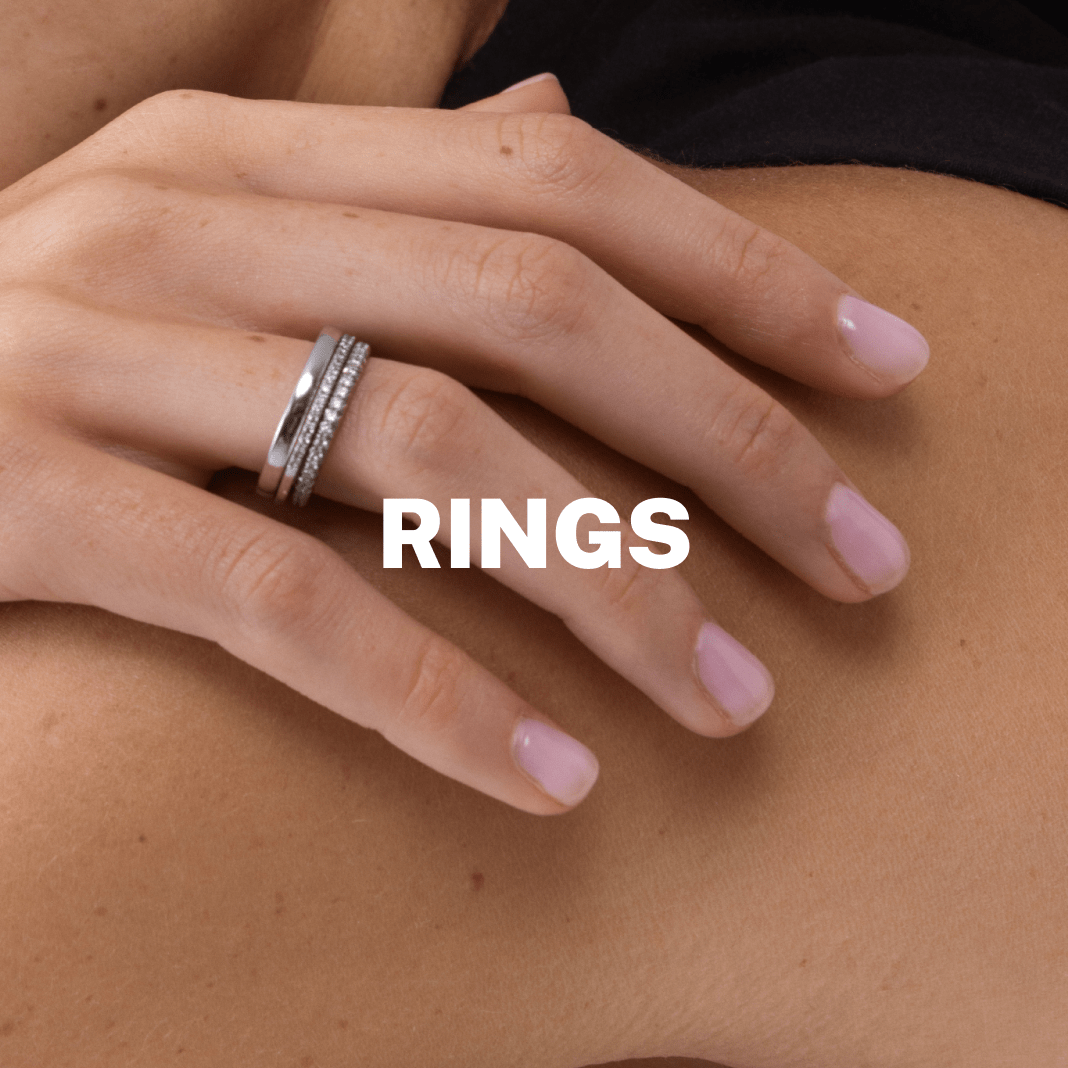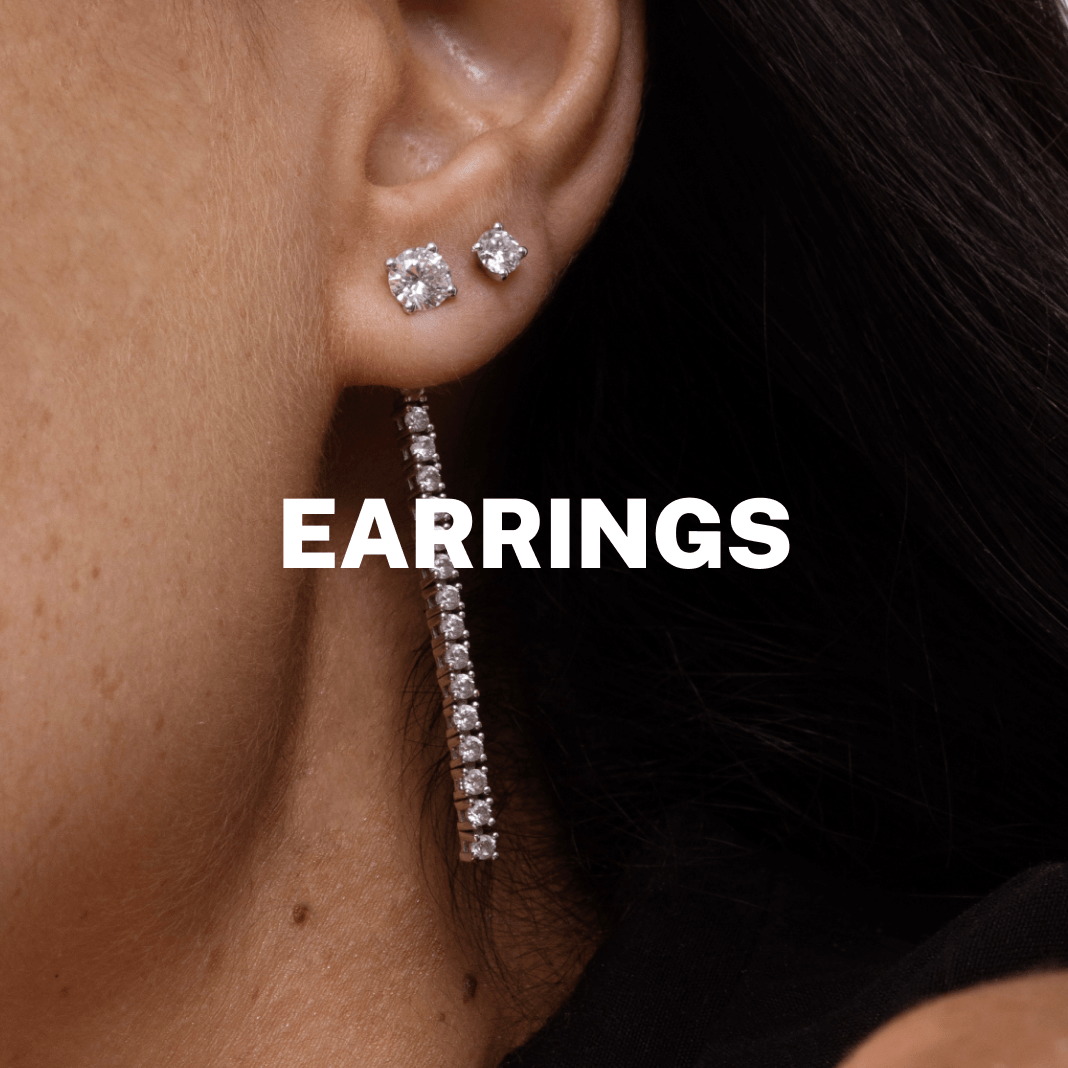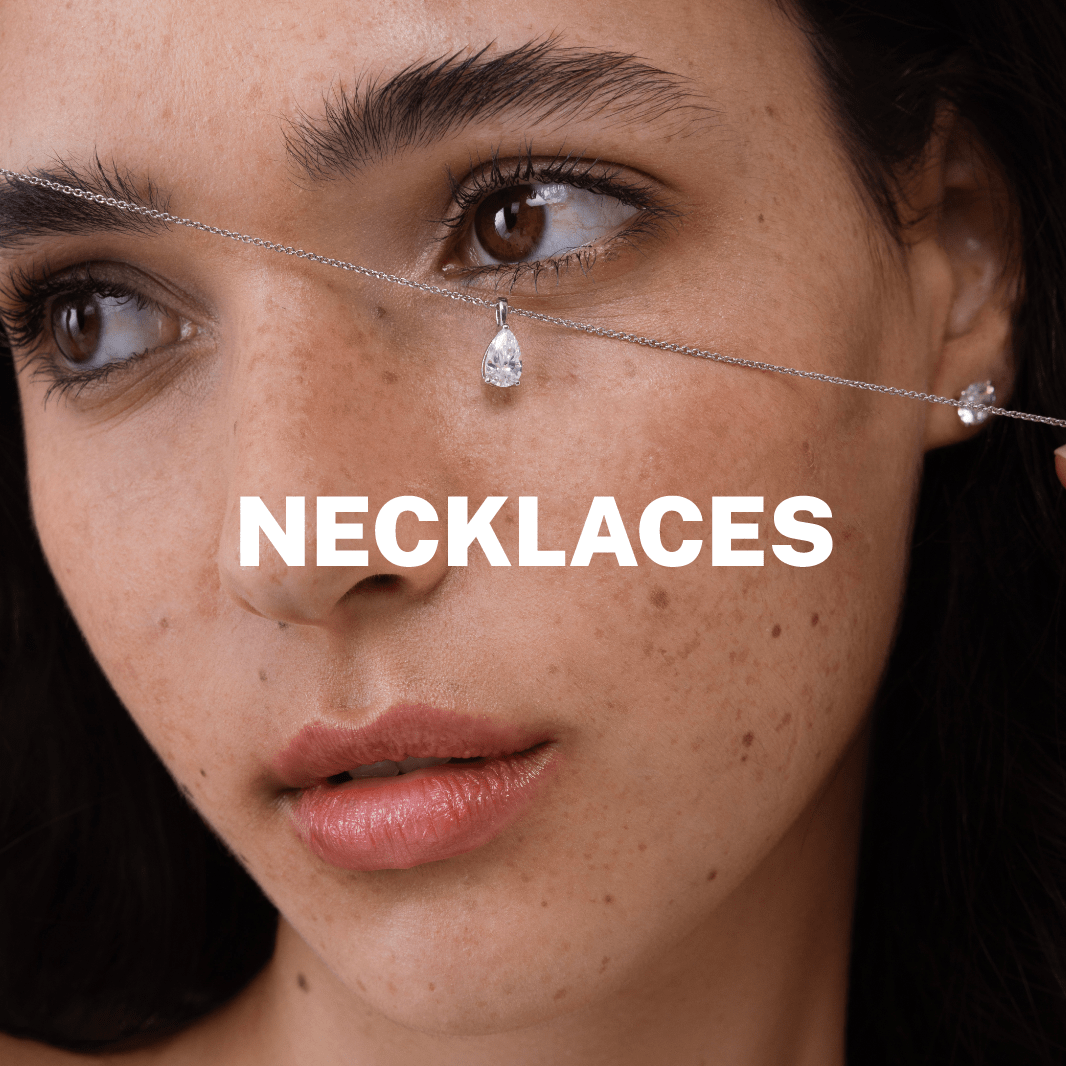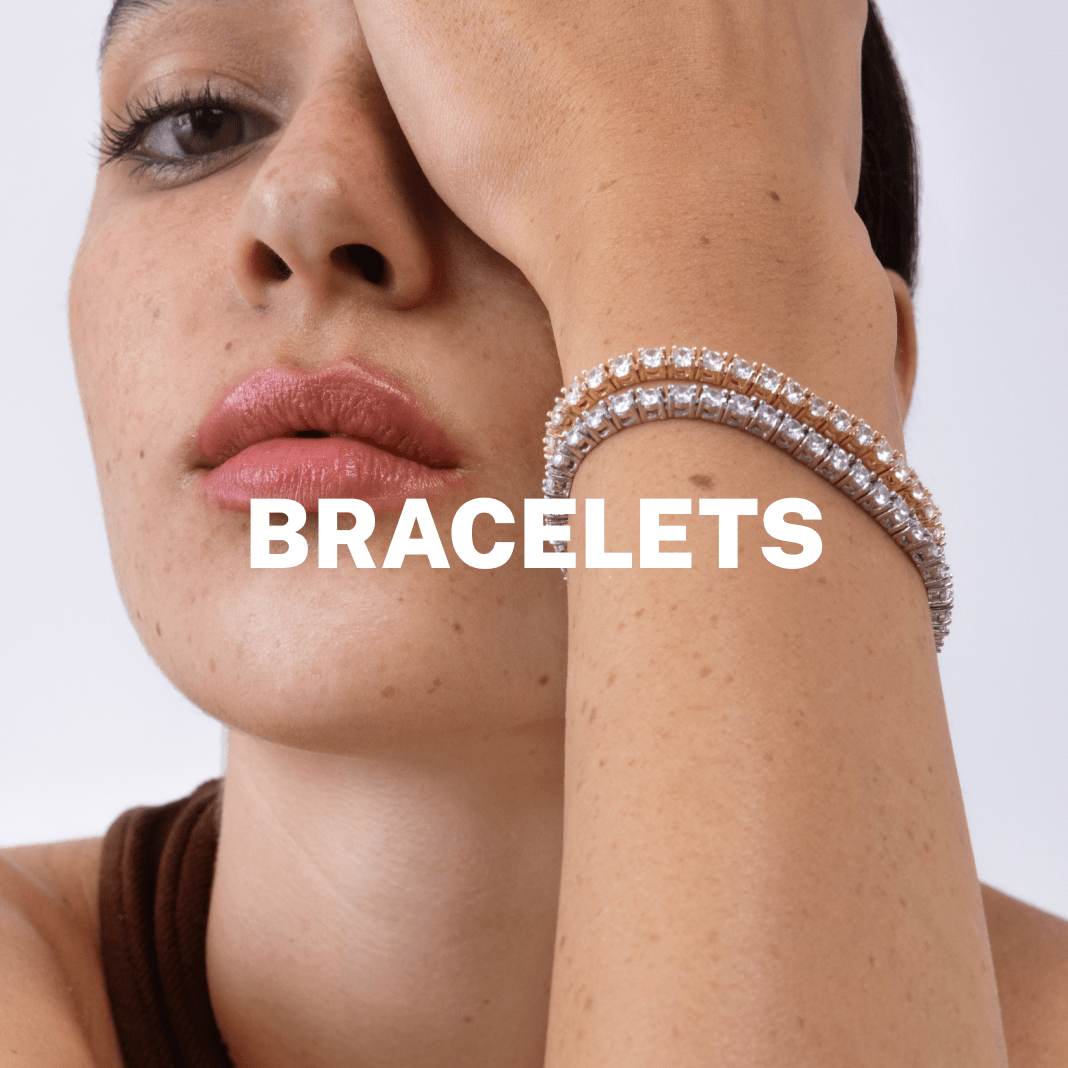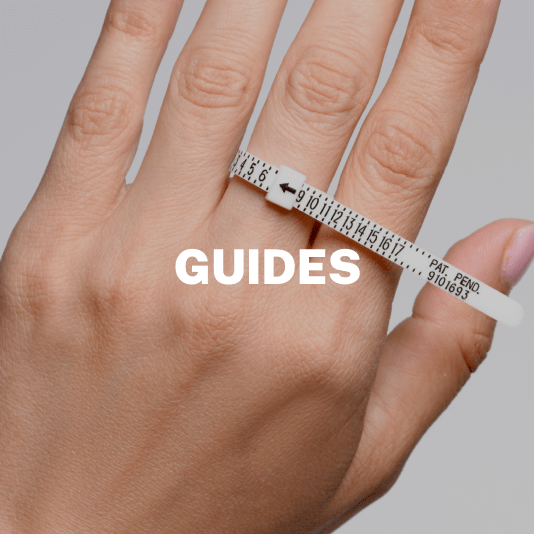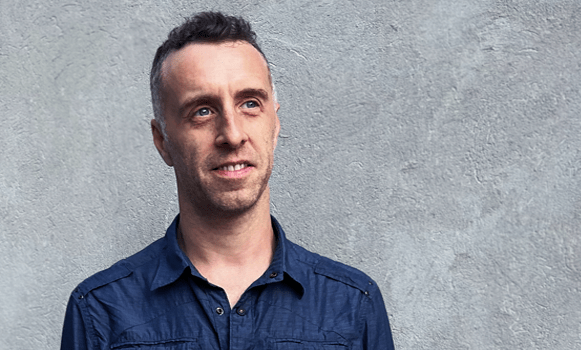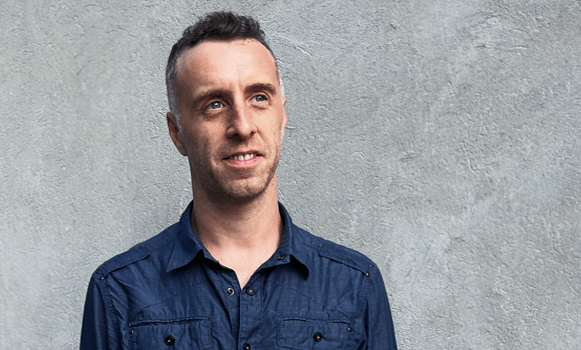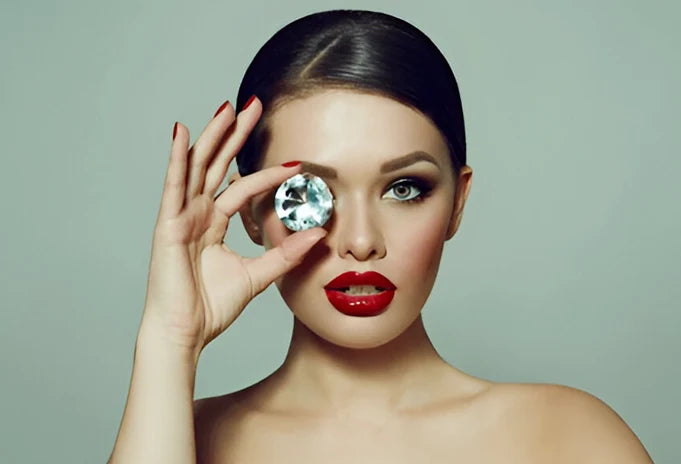
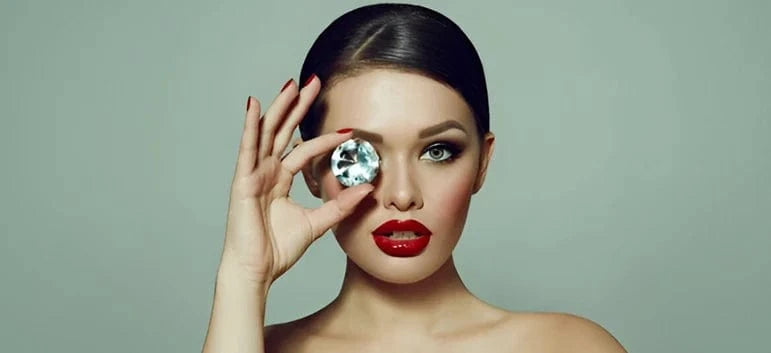
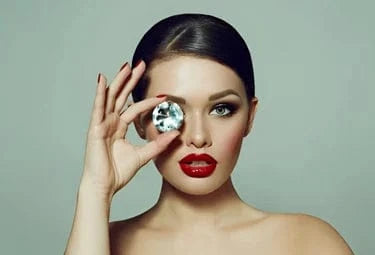
20 Years, 20 Truths
Sun, Aug 10, 2025
20 Years of Trade Secrets. Shared Without the Spin.
After two decades in the diamond and jewelry world—designing, sourcing, crafting, and selling directly to thousands of clients—we’ve seen everything the industry tries to sell you… and everything it leaves out.
This document is a collection of unfiltered insights, trade truths, and sharp buying tips from Shiree and Daniel, the founders of Shiree Odiz. It's not fluff. It's what we’ve learned from being on both sides of the counter.
We’re coining these truths, not to sound clever, but to give you language, clarity, and confidence when buying fine jewelry. You’ll walk away smarter, sharper—and maybe even a little shocked at what others don’t tell you.
This is the knowledge we wish every client had before they walked into a jewelry store. Now it’s yours.
1. The Face Value Paradox
“A 1.00 carat princess might look like a 0.70 carat round. Shoppers get excited about price per carat, but what often matters is how big the diamond actually looks when it’s set in the jewelry and worn. That’s the Face Value Paradox—and we explain it to every client before they buy.” – Daniel Setton, Co-Founder
|
Shape demo |
Price per Carat |
Face-Up Size |
1ct Surface Area (mm²) |
2ct Surface Area (mm²) |
|
Princess |
Lower |
Smaller |
30.2 |
42.2 |
|
Cushion (square) |
Lower |
Smaller |
32.5 |
44.9 |
|
Asscher |
Lower |
Smallest |
28.1 |
39.7 |
|
Square Radiant |
Lower |
Smaller |
31.4 |
43.6 |
|
Round |
Higher |
Balanced |
42.2 |
65.6 |
|
Oval |
Higher |
Larger |
43.9 |
70.0 |
|
Pear |
Higher |
Larger |
46.8 |
77.0 |
|
Emerald |
Higher |
Elongated |
35.0 |
54.0 |
|
Marquise |
Higher |
Longest |
57.8 |
84.5 |
2. Fails Every Financial Test. Still Worth It.
Fine jewelry isn’t a profitable investment. You’ll almost never resell it for more than you paid. The cost includes more than gold and diamonds—there’s labor, design, polishing, margins, overhead, logistics and more.
But it’s still one of the best investments you can make. It’s the only “loss” you’ll wear every day for decades. Unlike shoes, bags, or clothing, fine jewelry doesn’t stretch, fade, or date. It stays. It shines. It’s cleaned, polished, and reset to look brand new—whether it’s worn once a year or once a day.
So while it fails every rule of return, it delivers something no other investment can: perpetual, personal utility without wear. The closest to this may be your home.
Fine jewelry is the only luxury you can wear every day without wearing it out. It doesn’t stretch, scuff, or fade. It holds its shine, its shape, and its meaning. A ring, bracelet, or necklace becomes part of your routine—zero effort, maximum presence. Unlike most things you buy, its value comes from how often you wear it, not how long you store it.
“There’s little to no ROI on fine jewelry. But there’s a return every time you wear it. It’s a bad investment on paper. A brilliant one in practice.” – Daniel Setton, Co-Founder
3. Real Natural Diamonds for $10 Each. Seriously.
Those tiny diamonds around your center stone? They're called melee—and despite what salespeople might imply, they aren’t worth much individually.
Unless extremely high quality, most melee diamonds cost less than the labor required to set or replace them. For example, a 0.01 carat natural diamond might cost just $10–$20, but replacing it involves delicate work, cleanup, and often re-tipping prongs. That’s why when one falls out, it’s not about recovering its value—it’s about restoring the look.
So should you avoid them? Not at all.
Melee diamonds add texture, light, and elegance—but they should be there for aesthetic reasons, not because they inflate your “total carat weight.” That number includes every tiny stone, but the value per carat of melee is drastically lower than the main diamond. Comparing total carat weight to a single center stone is like comparing gravel to a boulder— same material, totally different value.
“A single melee diamond can cost as little as $10—but setting it, replacing it, or repairing the prongs around it can cost five times more.” – Daniel Setton, Co-Founder
4. You Need Light Under the Diamond to Make It Sparkle. No You Don’t!
This is one of the most common myths in jewelry—and it sounds logical, but it’s completely wrong.
A lot of people believe that diamonds sparkle more if there’s light coming in from underneath. But that’s not how diamonds work. At all.
In a well-cut diamond, light enters from the top, reflects off the internal facets, and bounces back out the top toward your eye. That’s where the brilliance comes from—not the base. In fact, too much open space underneath can reduce contrast and dull the diamond’s performance. What matters is precision cutting, symmetry, and angles—not how much light hits the bottom.
The hole under the stone? That’s usually for cleaning access, design choice, lowering the setting of the diamond or weight reduction. It’s not the reason your diamond sparkles.
“If a diamond needs light from underneath to sparkle, it’s not well cut. The beauty should come from within—and come right back out the top.” – Shiree Odiz, Head Designer
5. Diamonds Can’t Break. False.
It’s true that diamonds are the hardest natural material on earth—but that doesn’t mean they’re unbreakable.
Hardness means resistance to scratches, not resistance to impact. Diamonds can chip or crack—especially at their thinnest points, like the girdle, culet (point), or sharp corners on shapes like princess or marquise. Even a well-cut diamond with a surface-reaching inclusion can fracture under pressure, especially during setting.
That’s why cut quality, setting technique, and design protection matter just as much as the diamond itself.
“Our designs are made to protect a diamond’s weak spots—culets, corners, and edges are never left exposed. Prongs are shaped and positioned to buffer accidents, and we only work with the finest setters for this exact reason. We don’t want to break our diamonds either.” – Shiree Odiz, Head Designer
6. Clarity-Enhanced Diamonds Are Broken Stones. False.
This is one of the most misunderstood treatments in the diamond world.
Fracture-filled or clarity-enhanced diamonds are not cracked, broken, or glued. They’re real natural diamonds—typically naturally lower-clarity earth-mined stones with internal imperfections (called feathers or fractures) that have been optically improved by filling them with a clear, stable material.
It doesn’t change the diamond’s structure. It doesn’t make it weaker. It simply makes the imperfection less visible—restoring the appearance, not masking damage.
And the enhancement isn’t permanent—it can be reversed. That’s why it’s not considered “tampering” or deception. The diamond is what it always was—just with a visual assist.
“Clarity enhancement doesn’t change the diamond—it just improves how it looks. These are natural stones with visible imperfections, made more aesthetically pleasing. The treatment can be removed, so just as the diamond is no weaker with it, it’s no stronger without it.” – Daniel Setton, Co-Founder
7. Made-to-Order Jewelry Costs More. False.
Most people assume that made-to-order jewelry—crafted one piece at a time—is more expensive than ready-to-buy store stock. But in fine jewelry, the math works the other way around.
Yes, mass-produced pieces might save a few dollars per item in goldsmith labor. But the cost of holding inventory in physical stores adds far more: retail rent, insurance, security, sales commissions, packaging, staff, marketing, and layers of markups.
That cost gets passed to you—without any added value.
At Shiree Odiz, made-to-order means every piece is crafted for you when you order it. It doesn’t sit in a display case. It isn’t handled by dozens of people. And it isn’t priced to cover a luxury storefront. The result? You get more care, more quality, and more diamond for your money.
“Mass production might save a jeweler $50 in labor. But keeping that piece in a store might cost $500 in overhead. With made-to-order, every dollar goes into the jewelry—not rent and financing inventory.” – Shiree Odiz, Head Designer
8. Trends Are About Taste?! Actually, They’re About Leftovers.
Most people assume that jewelry trends are born from creativity, celebrity influence, or shifting fashion. Sometimes, they are. But more often than not, trends follow surplus.
When certain types of diamonds or gemstones are abundant, difficult to sell, or lower in demand at the trade level, they get rebranded as “unique,” “alternative,” or “on-trend.”
Think: salt and pepper diamonds, raw stones, champagne tones, heavily included or off-color gems. These stones often have aesthetic appeal—but they weren’t always fashionable. They were available.
And when something is available in bulk at a lower cost, it becomes easier to market, margin, and move—especially when framed as edgy, artisanal, or unconventional.
So yes, go for a unique diamond if you love the look. Just know what’s driving the trend—and make sure the price reflects the quality, not the narrative.
“In 20 years in the industry, I’ve seen a multitude of trends rise overnight—driven by the sudden availability of cheaper, harder-to-sell stones. It’s a quick-profit game. But at Shiree Odiz, we design for longevity. Timeless pieces, not fleeting trends built around surplus.” – Shiree Odiz, Head Designer
9. Fluorescence Makes Diamonds Look Cloudy.
99% of the Time, It Doesn’t.
Fluorescence is one of the most feared words in diamond buying—usually because people don’t actually understand what it does.
In reality, faint to medium fluorescence is invisible to the naked eye. Even strong blue fluorescence, in most cases, doesn’t affect a diamond’s appearance negatively—and can actually improve how warmer-colored diamonds (J–K and lower) look in daylight, giving them a cooler, whiter glow.
Yet these diamonds are often discounted, simply because buyers have been told to avoid them.
Only in rare cases—usually when the stone has both very strong fluorescence and poor clarity—might the diamond appear slightly hazy. And those stones don’t make it into our collection.
So yes, fluorescence can be a feature, not a flaw—if you know what to look for.
“Fluorescence is one of the most misunderstood traits in diamonds. In most cases, it does absolutely no harm—and can even enhance the look of warmer stones. For savvy buyers, that’s an opportunity.” – Daniel Setton, Co-Founder
10. The #1 Thing Dulling Your Diamond Isn’t the Cut.
People obsess over clarity, cut, and certifications to get maximum sparkle—but nothing dulls a diamond faster than your own hands.
Daily buildup from hand creams, body lotions, makeup, sunscreen, and even natural skin oils leaves a filmy residue across the surface of your diamond. That invisible layer collects dust, scatters light and kills brilliance—no matter how perfectly cut or beautifully set the stone is.
The result? A premium diamond that looks average. A flawless stone that looks flat.
The fix? Regular cleaning. Warm water, a soft brush, and dish soap will restore the sparkle in minutes. No need for ultrasonic machines or jewelry cleaners. Just a habit.
“Sometimes a ring comes back after a few years and it looks totally dead—like the diamond just gave up. But it’s not the stone. It’s layers of hand cream, lotion, life. A quick clean and boom—it’s sparkling like new again.” – Shiree Odiz, Head Designer
11. GIA is the most expensive, but the cheapest
GIA Is the Most Expensive Certificate. And Still the Best Deal.
GIA-certified diamonds often come with the highest price tags. So it’s easy to assume you’re just paying for the name.
But here’s the truth: GIA is the strictest, most consistent grading lab in the world—and that matters. Yes, you’ll pay a premium for the certification, but it’s less than what you could be paying thinking you got a good deal, but didn’t.
Take this example:
-
A 1ct, H-SI1 round diamond with GIA certification is priced around $2,300.
-
A 1ct, F-VS1 GIA diamond? Around $3,350.
Now imagine a looser lab grades that same H-SI1 stone as F-VS1. It sells for $2,800–$3,000—a price that looks like a deal, but only because the paper is doing more work than the diamond itself.
The jeweler profits. You get less than you think.
That’s the problem with non-GIA labs: they make the diamond appear “upgraded,” but all it really does is inflate perceived value while protecting margins. You’re paying more for a stone that hasn’t changed—just the label has.
But That’s Not the Whole Story...
There’s also a flipside.
Because GIA is so strict, it sometimes assigns grades that sound worse than they look. For example, it’s not uncommon to find an I1 diamond from GIA that looks completely eye-clean—but customers avoid it because the grade sounds like a red flag. And you can miss some of the best deals, especially on larger 100% natural diamonds.
Meanwhile, other labs would happily grade that same diamond SI1 or SI2—a label that feels safer, and open up a window of opportunity to consider stones you’d usually miss. Similarly you can get a large GIA graded VS2 diamond with a single, relatively small but visible central black carbon spot that’s a true eye sore.
At Shiree Odiz, we don’t sell paper—we sell beauty. We often find amazing value in GIA I1 or SI2 stones that have great brilliance, symmetry, and polish, and look incredible to the naked eye. We know how to spot them—and we guide our clients to them.
“Buying diamonds isn’t about chasing the highest grade—it’s about the best look. GIA gives you honest clarity grades, not marketing spin. We show you what a stone actually looks like naked-eye, so you pay for what shines—not what reads well on paper.” – Daniel Setton, Co-Founder
12. Marketplaces Are Full of Junk Jewelry. Not Always.
It’s easy to assume that online marketplaces like eBay, Etsy, Amazon, and others are flooded with low-quality, overpriced, or mass-produced jewelry. And yes, there’s plenty of that.
But here’s what most people don’t know: some of the best value in fine jewelry can be found on these platforms—often from highly reputable sellers.
Many independent jewelers and established brands use marketplaces strategically to move select inventory, offer opportunistic deals, or reach price-sensitive shoppers—without the high cost of ad spend or maintaining a physical retail presence.
Fees on platforms can range from 10% to 20%, and advertising costs (like promoted listings or offsite ads) may eat up another 5–15%. On paper, that should make prices go up. But that’s not how the algorithms work. Because competition is so intense, prices are often driven down, not up—meaning savvy buyers can unlock real bargains. Ironically, it’s the premium GIA graded and larger diamonds that are overpriced as normal margins on those stones are surprisingly low in percentage terms, not enough even to cover the fixed marketplace fees, so the price has to go up.
Why That Matters
You’re not always buying “less”—you’re often just buying from a seller who’s sacrificing margin for volume.
Many platforms now offer authentication services, buyer protection, and strong reputation systems, adding trust to the transaction.
Assuming a $5,000 diamond engagement ring, here’s what platforms typically charge:
|
Platform |
Seller Fee |
Estimated Ad Cost (ROAS-Based) |
Auth/Inspection |
Pros |
Cons |
|
eBay |
15% fee on sales ≤ $5,000 thesun.co.uk |
Promoted Listings drive 4–6% ad spend (~$200–300) |
Authenticity guarantee for luxury items |
Massive reach, strong trust through buyer protections |
High competition and fee structure reduce margin |
|
Amazon |
20% referral fee on jewelry |
Sponsored Product ads 10–12% ($500–600) |
Amazon Authentics? Limited; mainly self-auth |
Huge audience, quick scaling |
High fees, complex policies |
|
Etsy |
~6.5% transaction + 3% payment + $0.20/listing ≈10% |
Onsite ads ~3–5% + Offsite addl 12–15% (if < $10k sales) ; expected ROAS 2× |
No platform auth |
Niche, trusted handmade community |
Smaller jewelry audience, ROI-sensitive |
|
Worthy |
~15% commission (auction) |
Marketing is included |
Full expert authentication |
Premium resale focus, trust |
Unpredictable price, time |
|
Catawiki |
~12–15% commission |
Marketing included |
Expert verification |
Curated, prestige buyers |
Strict vetting and slower process |
And yes, even brands like Shiree Odiz, who began on eBay in 2006, still maintain marketplace listings—not to push leftovers, but to offer real value where the market expects it.
The Bottom Line
Marketplaces aren’t just full of junk—they’re full of misunderstood opportunity. If you know what to look for, you can find authentic, high-quality, expertly made jewelry—often at prices better than anywhere else.
13. Not Sure About Her Ring Size? Go Bigger, Not Smaller.
When guessing her ring size, most people assume tighter is better. But in fine jewelry, going a little bigger is always the safer move.
Here’s why:
-
Sizing down is clean: We can remove a section of the band and preserve the design.
-
Sizing up is messy: We often need to add gold, disrupt details (like pavé), or compromise the structure.
-
Going too small can ruin the moment: If the ring doesn't fit, you miss the shot—no hand-on-the-chest reveal, no close-up for Instagram, no sharing it with friends that night.
-
A looser ring means you can still say yes, snap photos, and resize it later— with minimal effort and no design damage.
Pro Tips from 20 Years in the Trade
-
Use her ring as a guide: Measure the inner diameter with a ruler and convert it to a standard size.
-
Ring gauge strips work: Inexpensive and effective—especially when tested over a full day.
-
Go up half a size for wider bands: 4mm+ rings need a touch more room.
-
Size for comfort across temperatures: Fingers swell and shrink—test at different times of day.
-
Always better a little loose: Comfort, photos, and peace of mind.
“If you're unsure, size up slightly. A loose ring can be brought in cleanly. But if it’s too small, she won’t even be able to wear it for the photos—let alone show it off. That’s not how you want to start the moment.” - Shiree Odiz – Head Designer, Founder
14. Diamond Jewelry Margins Are Huge. Actually, They’re Not.
One of the biggest misconceptions in the jewelry industry is that retailers are making a fortune on every diamond ring sold.
The reality? Most brands—big or small—operate on razor-thin net margins, typically around 5%. The reason for this is the highly competitive and traditional industry. Combined with low barriers to entry, consumer confusion when comparing quality, online sales and limited innovation, and commoditization of the products occurs.
But the story doesn’t end there.
That 5% bottom line hides a complex ecosystem of costs that vary wildly depending on the jeweler’s business model. The gross margin—the difference between what you pay and what the jewelry actually costs to make—might look big, but what it covers can be radically different.
Let’s break it down.
💰 Gross vs. Net: What You’re Really Paying For
Below is a simplified model of how that same $5,000 ring supports four different types of businesses:
|
Mega Brand |
Chain |
Independent |
Online |
|
|
Price |
2-3x |
1.5x |
1.25x |
1x |
|
Gross Margin |
80% |
65% |
45% |
30% |
|
Cost of Jewelry |
20% |
35% |
55% |
70% |
|
Inventory |
5% |
10% |
15% |
0% |
|
Marketing |
55% |
30% |
10% |
20% |
|
Store Overheads |
10% |
15% |
15% |
0% |
|
Management, offices, insurance, payment processing, logistics. |
5% |
5% |
5% |
5% |
|
Net Profit |
5% |
5% |
5% |
5% |
All end up with roughly the same profit margin. But the paths to get there are very different.
Mega Brands: Prestige at a Premium
High-end, globally recognized names justify 2–3x markups because of their branding, R&D, in-house design teams, celebrity partnerships, and store presentation. The quality is usually excellent—but you're paying as much for the name as you are for the materials and craftsmanship. The largest brands not only invest in storytelling but design R&D. Some pieces are so precisely engineered that they’re nearly impossible to replicate affordably.
What you’re paying for: Prestige, packaging, high-end service, brand identity.
Chain Stores: The Illusion of a Deal
Chain stores appear affordable—but often achieve that by cutting corners. Less gold. Lower clarity, off-color diamonds. Mass production. The markup isn’t much higher—but relative to the quality, the value is absolutely weaker. Their gross margin must cover real estate, sales commissions, inventory storage, security, and more.
What you’re paying for: Convenience, brand recognition, instant purchase—at a cost to craftsmanship.
Independent Jewelers: Personal Service, Local Overhead
Independent stores often offer better craftsmanship and more attention to detail than chains. But with the cost of a storefront, limited inventory turnover, and modest volume, prices are typically 15–25% higher than online. Still, for many buyers, the ability to touch, try on, and trust the person selling it adds meaningful value. Note that there’s generally a difference between jewelers that craft their own jewelry (higher-end) than those that stock mass produced on consigned jewelry (mid-range).
What you’re paying for: Face-to-face guidance, trust, tactile experience.
Online Brands: Lean, Transparent, Quality-Driven
Well-run online brands that design and manufacture in-house often operate lean—with no inventory storage, no showroom rent, and no salesperson commissions. That means more of your money goes into the jewelry itself. Especially with larger stones and certified diamonds, gross margins can dip to 15–20%—barely enough to cover marketing, logistics, and customer service at scale.
What you’re paying for: Maximum value in materials and craftsmanship, with lower overhead baked into the price.
The Bottom Line
Jewelry pricing isn’t just about materials or design—it’s about the business model behind the brand.
So the next time you compare prices, remember: a lower price doesn't always mean lower quality—and a higher one doesn't guarantee more value.
Ask where your money is going. Is it in the box? Or the billboard?
15. Lab diamonds aren’t eco-friendly. Unless they’re carbon neutral.
Lab-Grown Diamonds Aren’t Eco-Friendly—Unless the Energy Is Clean
Lab-grown diamonds are often marketed as ethical, sustainable, and environmentally superior to mined stones.
But that’s only true if the diamond was grown using clean energy.
The Energy Source Is Everything
A lab diamond grown in a coal-powered factory can produce up to 3× more carbon emissions than a natural diamond. That’s because growing a diamond in a lab requires sustained temperatures of over 1,000°C for weeks—an energy-intensive process.
Real Emission Data (Per Carat)
|
Diamond Type |
Emissions (kg CO₂ e) |
Notes |
|
Natural Mined Diamond |
~165 kg |
Includes extraction, processing, and transport |
|
Lab-Grown (Coal Grid) |
~520 kg |
Common in China and India |
|
Lab-Grown (Renewables) |
17–45 kg |
U.S., Canada, and EU-based producers |
Sources: Reve Diamonds, IDC, AP News, Nature
Ecological Pros & Cons of Lab-Grown vs Natural Diamonds
Lab-Grown Pros
-
Can have a much lower carbon footprint when made with renewable energy
-
No open-pit mining or large-scale land disruption
-
Ideal for price-sensitive or ethically motivated buyers
Lab-Grown Cons
-
Many are produced in regions with coal-powered grids, resulting in high emissions
-
Often greenwashed, ie. marketed as “green” without full disclosure of production energy source
-
Facilities, reactors, and polishing centers also carry environmental impact
-
The cheapest lab grown diamonds are almost certainly the least ecological
Natural Diamond Pros
-
Major mining companies are improving sustainability practices (e.g., biodiversity, renewable energy)
-
No reactor infrastructure required
-
Can support long-term local economies
Natural Diamond Cons
-
Average carbon footprint is higher than renewable-based lab-grown
-
Requires significant land use and water in some regions
-
Historical concerns around transparency and ethics (improving, but not erased)
The Pricing Dilemma
Coal-powered lab-grown diamonds are now flooding the global market at rock-bottom prices. The cost is tempting—but the carbon cost is invisible.
Most consumers don’t know whether their lab diamond was grown in a clean-energy facility or a coal-fired reactor—because there’s no requirement to disclose it.
🌱 Our Position
At Shiree Odiz, we choose to source our lab-grown diamonds from verified partners that use renewable energy or operate under carbon-neutral protocols.
Yes, we pay more. But it’s a small premium—and one we believe is worth it.
When we say a diamond is sustainable, we mean it.
“Lab diamonds can’t be called ethical just because they’re lab-grown. If they’re made using coal, what exactly are we saving? We choose clean sources—even if it costs a little more—because that’s what real sustainability looks like.” – Shiree Odiz, Head Designer
16. Diamonds Don’t Just Fall Out… But It’s Still Worth Insuring Them
We’re often asked, “Can a diamond fall out of my ring?”
The honest answer: not if it’s set well—but life happens, and insurance is always smart.
At Shiree Odiz, we design every piece with long-term wear in mind. Our settings are engineered with security, structure, and comfort at the forefront, using techniques perfected over decades.
The Craft of Setting Diamonds Securely
Here’s what goes into making sure your diamonds stay exactly where they belong:
-
Prongs that protect: Every diamond is secured with at least four individual prongs, symmetrically placed for balance. Even if one bends or breaks, the others hold the stone in place.
-
No shortcuts: We never use two- or three-prong settings for center stones, and we don’t rely on shared prongs for pavé. Every stone has its own support with at least 4 prongs.
-
Extended coverage: We design longer pointed prongs that slightly and elegantly hug the tips of the crown of the diamond—helping secure the stone and protect its edges from chips.
-
Hidden bridges: Many of our prong settings feature a discreet support bar between opposing prongs—invisible from above, but critical for stability.
-
Post-cleaning checks: After each piece is cleaned in an ultrasonic bath, we perform a final inspection to ensure prongs are smooth, seated, and secure—so they don’t snag, shift, or loosen unexpectedly.
Gold & Platinum: Beautiful, but Softer Than You Think
While 14k–18k gold and platinum are ideal for crafting fine jewelry, they are also naturally soft. That’s what allows us to polish, shape, and mold them—but it also means they can bend, scratch, or wear over time.
That’s why we recommend:
-
Removing your ring during workouts or any activity where pressure, grip, or impact is involved
-
Avoiding the beach, pool, or bath—because if a stone comes loose, you won’t find it again
-
Being mindful of rough surfaces like stone countertops, sand, or brick that can scuff metal over time
Built for Real Life—Still Worth Protecting
Every Shiree Odiz piece is made for daily wear. Our designs are refined over years to minimize risk while maintaining elegance. That includes stronger prongs, secure pavé, and thoughtful touches only a trained eye would notice—but you’ll feel the difference.
That said, we always recommend:
-
Getting your jewelry insured, especially for larger diamonds or high-value pieces
-
Servicing your jewelry once a year—including prong checks and polishing. Many jewelry specific insurance policies, like Jewelers Mutual, will also cover maintenance and repairs.
-
Taking advantage of our lifetime warranty, which covers any design or manufacturing issues
Because even the most durable jewelry lives in the real world—and a little care goes a long way.
“We build every piece to last a lifetime. But jewelry lives on your hands—and life is unpredictable. A quick check-up or an insurance plan gives you peace of mind without ever needing it.” – Shiree Odiz, Head Designer
17. “Conflict-free” Isn't Ethical. Here’s Why.
Most brands stop at “conflict-free”—a basic paper sign-off. But true ethics demand more. Here’s how Shiree Odiz leads the way:
Our Ethical Standards
From raw materials to craftsmanship:
-
Full chain of custody over every diamond— backed by documentation from mine to masterpiece.
-
No mass-produced approximations— only highly skilled, well-compensated artisans, including master setters from Tiffany & Cartier backgrounds, working in-house with care and precision.
-
Made-to-order, zero waste— nobody handles or pushes stock; every piece is intentionally crafted and shipped.
-
Slow-fashion values— 100% recycled 14k–18k gold and platinum, long-lasting design, minimal impact.
Contrast: Mass-Market Reality
By comparison, mass-produced fine jewelry often involves:
-
Low-paid factory workers, sometimes under insecure, exploitative conditions.
-
Amazon-style fulfillment centers, pushing volume over craft.
-
Diamonds and gold sourced from regions with poor labor safeguards, little transparency, and weak environmental/safety standards.
Why It Matters
-
Skills & care: Every Shiree Odiz piece is made by artisans who love their craft—and are paid what they deserve.
-
No-by defaults: No sacrificing quality for price. No shortcuts.
-
Ethical confidence: You’re not only wearing a beautiful piece—you’re supporting its real-life source story, and the people who made it—with pride.
“Conflict-free” stops at legality. At Shiree Odiz, we go beyond compliance—to care, quality, and transparency every step of the way. That’s craftsmanship you can trust. That’s jewelry that's truly ethical.
18. Want Expert Advice? Skip the Store.
Many people assume that walking into a jewelry store means personalized service and expert guidance. In reality, the larger the brand, the less likely you are to speak with someone who knows anything about diamonds - let alone the piece you’re buying.
Most in-store sales staff are trained in scripts, not gemology. They’re incentivized to move stock—not to educate. And the more commercial the chain, the more likely the salesperson is selling hundreds of pieces a month, often without ever having met the person who designed them.
Here’s What Actually Happens In-Store:
-
Salespeople are often trained in sales psychology—not diamonds or metals
-
Their job is to close the sale—not guide you through clarity, cut, or craftsmanship
-
Many don't know where the stones came from, who designed the ring, or how it was made
-
They don’t know or appreciate the nuances in diamond quality, craftsmanship or value.
-
You’ll rarely (if ever) speak to the designer, goldsmith, or diamond setter
The Online (or Independent) Advantage
-
At Shiree Odiz, you can speak directly with our founder or head designer—people with 20+ years of hands-on diamond, design, and manufacturing experience
-
We’ve helped thousands of couples choose, personalize, and understand their jewelry—without the pressure or sales pitch
-
Our advice comes from real-world knowledge, not commissions
“I’ve walked into luxury stores and asked basic diamond questions that salespeople couldn’t answer. Most of them have never made a piece of jewelry—and they’ve definitely never worn one. We’ve lived this for decades. Our advice is personal, not rehearsed.” – Shiree Odiz, Head Designer
In-store doesn’t guarantee expertise. In fact, the smaller and more independent the jeweler, the more likely you are to speak to someone who actually knows—and cares. That’s where the real value is.
19. A Higher Clarity Diamond Always Looks Better. Nope.
On paper, a VS1 or VVS diamond sounds better than an SI1 or I1. But when it comes to real-world sparkle and beauty, clarity isn’t a guarantee of what your eyes will see.
Why Clarity Grades Can Mislead
Yes—GIA will tell you what the inclusions are, where they’re located, and how many there are. But what the certificate can’t tell you is how the diamond actually looks.
It’s totally possible for an SI1 diamond to look cleaner than a VS2.
-
One might have white, scattered inclusions hidden near the edge, invisible without magnification.
-
The other might have a single black inclusion right in the center, visible with the naked eye in certain lighting.
Filtering out “lower” clarity grades means you’re eliminating some of the best value stones—ones that could look incredible when viewed in person or on video.
Watch for Cloudiness
Some diamonds—often with VS clarity and no visible inclusions—can still appear hazy or dull. Why?
-
Strong fluorescence (in rare cases) can cause a soft glow or milkiness
-
Material transparency varies from stone to stone—some just aren’t as glassy
-
Clustering of microscopic inclusions can disrupt light return, even if the grade is “clean”
Meanwhile, an eye-clean SI1-SI2 or even I1 diamond with excellent cut can be brilliantly bright and full of fire.
Let’s look at this GIA graded H-VS2 diamond. Stunning on paper… in reality it’s a dull, milky diamond.
Diamond video:
https://www.dropbox.com/scl/fi/1gprp3yp90rks28ihw1h6/6221410196.mp4?rlkey=a12w8afwzjlnzwa44rl7bf585&dl=0
GIA cert:

The Real Priority? Cut. Always.
A poor-cut diamond with perfect clarity still won’t sparkle.
A well-cut diamond with some inclusions? It might look phenomenal.
At Shiree Odiz, we inspect every diamond—by video and in real life—to ensure it passes our “eye-clean and brilliant” test, regardless of what the certificate says.
“Some of the most beautiful diamonds I’ve ever seen were SI1s—and some of the worst were flawless on paper. If you only shop by grade, you’ll miss the best value stones. Always compare. Always trust your eyes.” – Daniel Setton, Co-Founder
20. It’s a Reputable Brand. It Must Be Good.
One of the most common assumptions in diamond buying is that a reputable brand guarantees a great diamond. But in reality, even the most honest, established jewelers can sell diamonds that simply aren’t great value.
Let’s be clear: this isn’t about dishonesty. You can be an honest jeweler, selling a fairly graded diamond, with transparent pricing—and still sell a poor-quality stone or one that’s not the best use of your customer’s budget.
Why? Because every diamond is different.
You can’t rely on a brand name, certificate, or price tag alone. You need to look at each diamond individually—how it’s cut, how it performs, where its strengths and flaws are, and how that relates to your budget and priorities.
Real Story
A young woman came to us years after a breakup. She wanted to sell the engagement ring she’d received, from a well-known national chain. Her ex had spent a significant amount on it—she even remembered the price. The brand was recognizable. The paperwork was all there.
But when we evaluated the diamond, the story changed.
It wasn’t a terrible diamond. It was properly graded. It wasn’t misrepresented.
But based on the price and the brand’s reputation, the quality and beauty of the diamond just didn’t add up. It was underwhelming. It lacked brilliance. And it certainly wasn’t worth anywhere near what had been paid.
The ring had been purchased in good faith—from a big name, with full trust.
And still, it was a poor choice.
